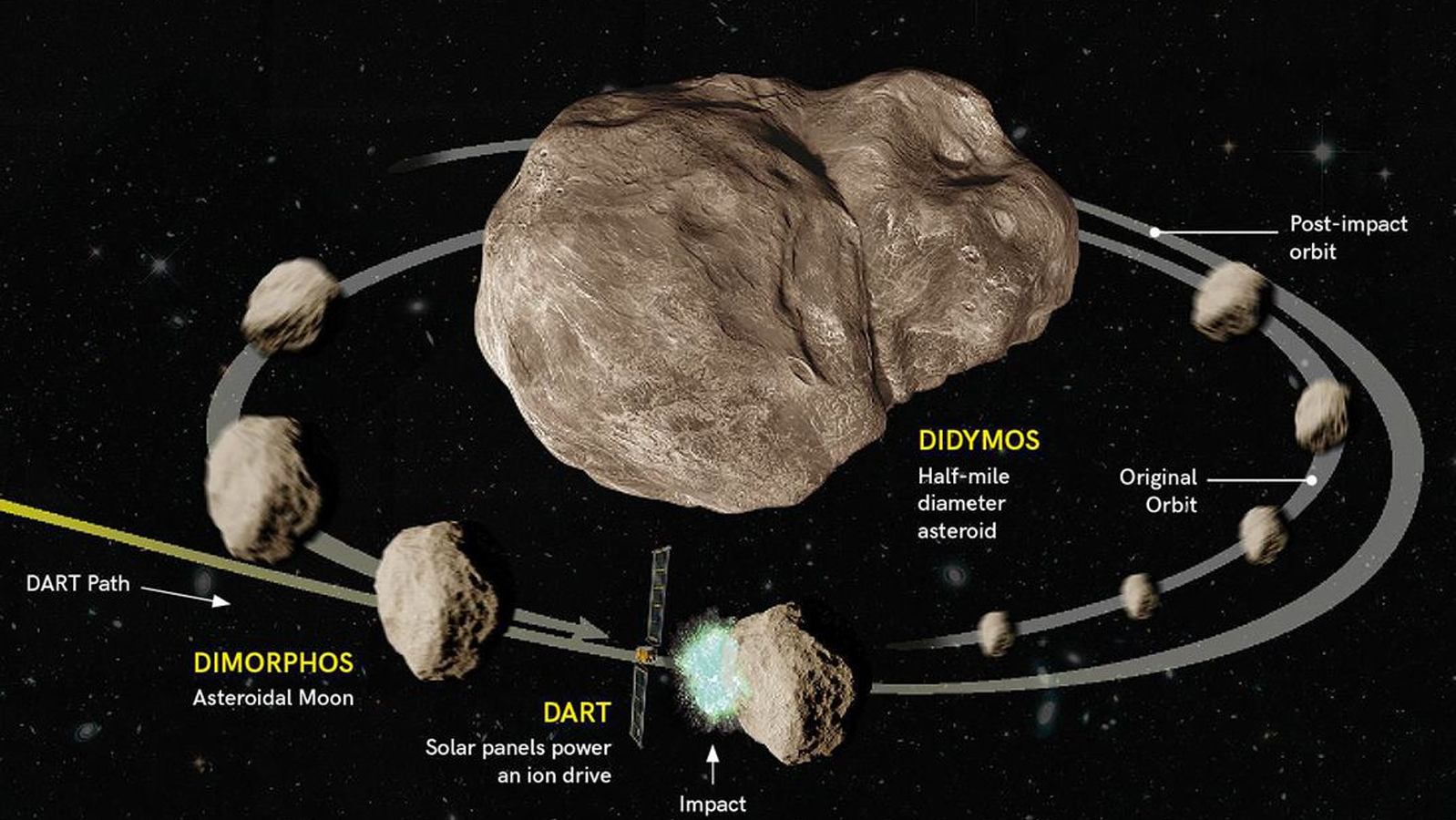NASA Is Going To Try To Re-Direct The Path Of An Asteroid By Crashing A Spacecraft Into It
It's been talked about for years, but this will be the first time NASA has actually tried to deflect an asteroid
If you're a fan, like I am, of not being crushed to death by a rock that falls from the sky, then you should be interested in the mission NASA launched today with a SpaceX Falcon 9 rocket. The spacecraft in the nose of that rocket is called DART (Double Asteroid Redirection Test), and that spacecraft is going to smack right into the asteroid Dimorphos in hopes of redirecting its path.
Now, I'm happy to say this is being done not because Dimorphos is actually threatening to hit the Earth but because it makes for a good test subject. See, Dimorphos is part of a binary pair of asteroids and orbits around the asteroid Didymos, so NASA can tell if the impact of DART into Dimorphos affected its orbit around Didymos. It can then use that information to calculate how a similar strike to an asteroid potentially headed to Earth could be deflected.
Asteroid Dimorphos: we're coming for you!
Riding a @SpaceX Falcon 9 rocket, our #DARTMission blasted off at 1:21am EST (06:21 UTC), launching the world's first mission to test asteroid-deflecting technology. pic.twitter.com/FRj1hMyzgH
— NASA (@NASA) November 24, 2021
The spacecraft is small and boxy, and it will hit Dimorphos at an impressive 14,760 mph, sped along by its NEXT xenon ion thruster engine, which converts solar energy into gradual but persistent thrust.

An onboard camera and autonomous navigation software will guide DART to its self-sacrifice into the asteroid, which will change the speed of the asteroid's orbit around the main asteroid by a fraction of a percent. But that should affect the orbital period by several minutes, all of which will be confirmed by observations from Earth.

DART won't arrive at the asteroid pair until next September or so, which means you have plenty of time to figure out how to get close if you want a ringside seat.
The ability to deflect an asteroid could one day prove to be absolutely crucial to the safety of everything living on Earth. While, so far, NASA does not predict an asteroid of significant size hitting Earth in the next century or so, there have been 1,200 meteor impacts to Earth from asteroids over three feet in length since 1988, and only 0.42 percent of those—five—were actually predicted in advance.
So, it's not exactly like we have a really solid handle on this whole asteroid-prediction thing, and figuring out a way to be ready to deflect something would really be a great idea. Ideally, if this test works, a similar deflecting spacecraft will be made available and be ready to go, should the situation arise in the future.
